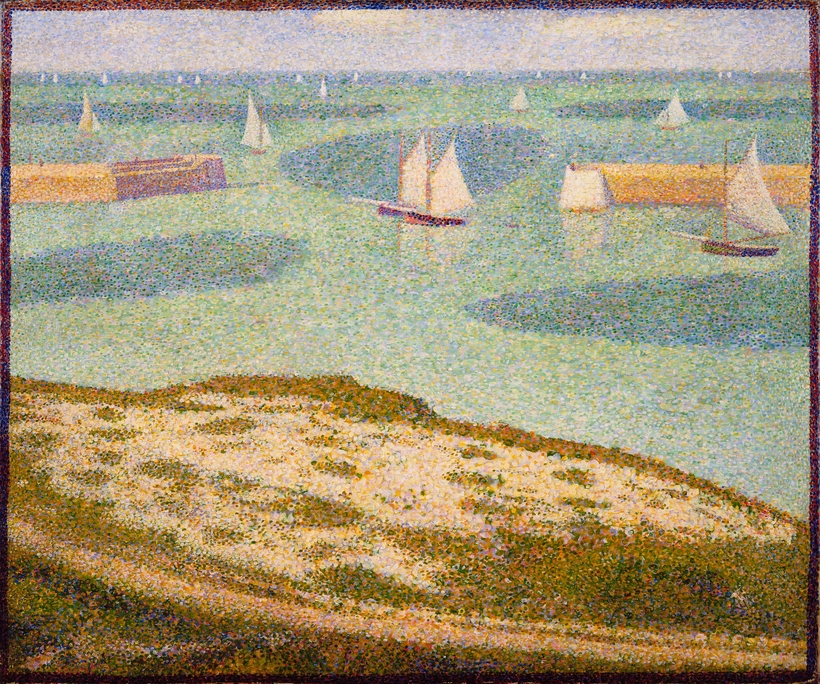One of the only surviving photographs we have of Lillie Bliss—fashionable in a fur-collared coat and a satin hat with a flourish of feathers—is by all accounts misleading. This elegant ensemble was likely one of only two owned by Miss Bliss, who despite her great wealth was a modest, intensely private spinster. Lively, wide-open eyes and a Mona Lisa smile hint at what friends described as her “radiant spirit.” A co-founder of the Museum of Modern Art, Miss Bliss was also a stealth rebel.
It was she who foresaw the need for a new kind of museum in New York City, she who conspired with a small circle of like-minded devotees and put her collection on the line to make it happen. “Lillie P. Bliss and the Birth of the Modern,” an exhibition that opens on November 17 at the Museum of Modern Art, showcases the unassuming pioneer.

Born into a wealthy New York family right out of Edith Wharton, Miss Bliss was a companion to her invalid mother, Mary, and lived at home until Mary’s death, in 1923. An accomplished pianist and a keen patron of classical music and opera, Miss Bliss experienced a coup de foudre for modern French art, and there was no going back. She not only bought widely, she developed personal connections to artists.
Among her first important acquisitions was a frolicking nude by the American artist Arthur B. Davies, a debonair bigamist with whom she developed an unusually close friendship. Russell Lynes, a clear-eyed chronicler of the museum’s behind-the-scenes history in the book Good Old Modern, simply said she “fell under his spell.” Davies became her mentor, escort, and guide to exhibitions, in particular the 1913 Armory Show of which he was a mastermind and she a willing sponsor and daily visitor. Davies was surely the one who planted the idea of a permanent home for modern art.

Though she bought a number of safer works, Miss Bliss was mad for Cézanne and eventually collected Picasso and Seurat, among others. And she defended her avant-garde choices. Frustrated after the Metropolitan Museum refused to host an exhibition of these modern works, she even went up against Louis Comfort Tiffany, a Met trustee, writing in a long letter, “The truth is you older men seem intolerant and supercilious.”
Miss Bliss and Mrs. Abby Rockefeller traveled to Egypt at the same time, and it is said the museum intrigue was hatched there—if not quite on camelback mid-desert. Mrs. Rockefeller further conspired on her passage home with Mrs. Mary Quinn Sullivan, an art-history whiz and wife of a prominent lawyer. The plot was more formally launched during a subsequent meeting of the three lady rebels chez Rockefeller.

Mrs. Rockefeller then convinced her skeptical husband, John D., to put up the seed money for the nascent museum. A. Conger Goodyear, a Buffalo collector who had been booted off the Albright Gallery board of trustees for his progressive notions, was enlisted to lead the campaign. The ladies sensed that a man would have better luck with other collectors and patrons.
Yet without Miss Bliss’s art collection as catnip for donors, the whole scheme was little more than a mirage. Her canny stipulation that an endowment of $1 million be raised as a collateral demonstration of support still left MoMA the right to deaccession some works to buy others, such as Van Gogh’s The Starry Night and Picasso’s Les Demoiselles d’Avignon—two of MoMA’s superstars.

The ladies secured the capital and held fast their vision of an inaugural French exhibition, despite the preference of Alfred Barr, the director-in-waiting, and Frank Crowninshield, committee member and publisher of Vanity Fair, for an American show. Opening only days after the stock-market crash of 1929, “Cézanne, Gauguin, Seurat, Van Gogh” was a triumph for the new museum, temporarily located in the Heckscher Building, on Fifth Avenue.
“In other words,” writes Kate Walbert in the exhibition’s companion book, Inventing the Modern: Untold Stories of the Women Who Shaped the Museum of Modern Art, “Bliss saved her beautiful things from becoming Victorian daughters themselves, fossilized and relegated to the upper rooms. She was determined to support artists in a future no one yet could envisage.”
“Lillie P. Bliss and the Birth of the Modern” will be on at MoMA from November 17, 2024, to March 29, 2025
Patricia Zohn has contributed to numerous publications, including Wallpaper*, Artnet, the Huffington Post, The New York Times, and the Los Angeles Times


